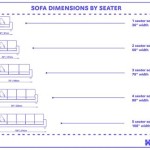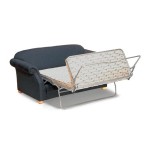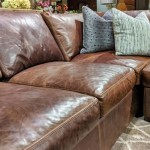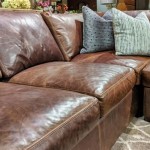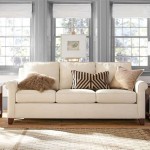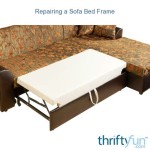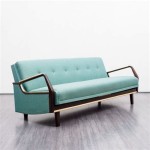The Stacey Sectional Sofa: A Comprehensive Overview
The Stacey Sectional Sofa represents a significant investment in home furnishings, offering both aesthetic appeal and functional seating arrangements. This article delves into the various aspects of the Stacey Sectional, examining its typical construction, design features, material options, benefits, and considerations for potential buyers. Understanding these factors is crucial for making an informed decision when purchasing a sectional sofa, especially one of this particular design.
Construction and Framing
The underlying framework of a Stacey Sectional Sofa heavily influences its durability and longevity. Most reputable manufacturers utilize kiln-dried hardwood for the frame. Kiln-drying removes moisture from the wood, minimizing the risk of warping, cracking, or shrinking over time. This process ensures the frame maintains its structural integrity, even under consistent use. Some manufacturers may opt for engineered wood, such as plywood or oriented strand board (OSB), as a cost-effective alternative. While these materials can provide adequate support, they are generally less durable than solid hardwood.
The joinery methods used in constructing the frame are equally important. Common techniques include mortise and tenon joints, dowel joints, and corner blocks. Mortise and tenon joints, where a projecting tenon fits precisely into a mortise (a cavity), offer exceptional strength and resistance to stress. Dowel joints, using cylindrical dowels to connect pieces of wood, provide a simpler and more efficient joining method. Corner blocks, reinforced with screws or glue, add extra support to the corners of the frame, which are often subject to the most strain. The quality of the frame and its joinery directly correlate with the sofa's ability to withstand daily wear and tear.
Beyond the wood frame, the suspension system plays a vital role in providing comfort and support. Sinuous springs, also known as no-sag springs, are commonly used in sectional sofas. These S-shaped springs are stretched across the frame and connected with metal clips, creating a resilient and supportive base. Another option is eight-way hand-tied springs, a more traditional and labor-intensive method. In this system, each spring is individually tied to the frame and to adjacent springs in eight different directions, resulting in superior comfort and even weight distribution.
Design Features and Configuration Options
One of the defining features of the Stacey Sectional Sofa is its versatility in terms of design and configuration. Sectional sofas, in general, are designed with modular components that can be arranged in various configurations to suit different room layouts and seating needs. The Stacey Sectional is no exception, often offering multiple pieces that can be combined to create L-shaped, U-shaped, or even straight sofa arrangements.
The individual components typically include armless chairs, corner wedges, chaise lounges, and ottomans. Armless chairs serve as the basic building blocks, providing seating without armrests. Corner wedges are designed to connect at a 90-degree angle, forming the corner of the sectional. Chaise lounges offer extended seating for relaxation, while ottomans provide additional footrests or seating as needed. The ability to mix and match these components allows buyers to customize the sectional to their specific requirements.
Beyond the configuration, the design aesthetics of the Stacey Sectional can vary widely. Some models feature clean, modern lines and low profiles, while others incorporate more traditional elements, such as rolled arms and button tufting. The design often reflects current trends in interior design, offering options to complement various decorating styles. The choice of legs, whether they are tapered wood legs or sleek metal legs, also contributes to the overall aesthetic. The back cushions and seat cushions can be designed in various styles, ranging from loose cushions for a more relaxed look to tight cushions for a more structured appearance.
Additional design features may include built-in storage compartments, cup holders, or even reclining mechanisms. Some Stacey Sectional sofas offer power reclining options, allowing users to adjust the backrest and footrest with the touch of a button. These features enhance the functionality of the sectional, making it a central hub for relaxation and entertainment.
Material Options: Upholstery and Fillings
The choice of upholstery material significantly impacts the look, feel, and durability of the Stacey Sectional Sofa. Common upholstery options include fabric, leather, and synthetic leather. Fabric options encompass a wide range of textures, colors, and patterns. Microfiber, known for its softness and stain resistance, is a popular choice for families with children or pets. Linen offers a natural and breathable option, but it is more susceptible to wrinkles and stains. Velvet provides a luxurious and plush feel, but it requires more delicate care.
Leather, a premium upholstery option, is known for its durability, elegance, and unique aging process. Top-grain leather, the highest quality type of leather, retains the natural grain of the hide and develops a rich patina over time. Corrected-grain leather, which has been sanded and refinished, offers a more uniform appearance and is often more affordable. Synthetic leather, such as polyurethane (PU) or polyvinyl chloride (PVC), provides a more budget-friendly alternative to genuine leather. While synthetic leather lacks the natural characteristics of genuine leather, it is generally easier to clean and maintain.
The filling material used in the seat cushions and back cushions determines the level of comfort and support. High-density foam is a common choice for seat cushions, providing firm support and resistance to sagging. Memory foam, which conforms to the body's shape, offers enhanced comfort and pressure relief. Down and feather fillings provide a soft and luxurious feel, but they require more frequent fluffing to maintain their shape. A combination of foam and fiber is often used to strike a balance between comfort and durability. The quality of the filling material directly impacts the long-term comfort and resilience of the sectional.
The ticking, or the fabric encasing the filling material, also plays a role in the overall quality. A tightly woven ticking prevents the filling material from leaking out and helps maintain the shape of the cushions. The ticking should be durable and breathable to ensure long-lasting comfort.
Finally, factors to consider when choosing materials for the Stacey Sectional Sofa includes factors like cost, aesthetic preferences, lifestyle, and maintenance requirements. Leather options are generally more expensive than fabric options but can be more durable. Families with young children or pets may want to consider a stain-resistant fabric. A person with allergies may prefer a fabric that is hypoallergenic.
In summary, a careful consideration of the sectional's construction, design and material composition is essential to selecting a suitable Stacey Sectional Sofa.

Stacey Leather 5 Piece Modular Sectional Sofa 2 Armless Chairs Square Corners And Ottoman Sofas

Stacey L Shaped Sectional Sofa Set Furniture Es Urban Concepts

3d Stacey 6 Piece Modular Sofa Macys Furniture Glancing Eye

Stacey L Shape Sofa Bonny Furniture

Stacey L Shape Sofa Bonny Furniture

Stacy Chesterfield Modular Sectional

Stacey 4 Seater Curved Sofa In Silver Suede Honey Home

Stacey L Shaped Sectional Sofa Set Furniture Es Urban Concepts

Wooden 7 L Shape Brown Designer Sofa Set Back Style Tight Warranty 1 Year

Pin On Home

